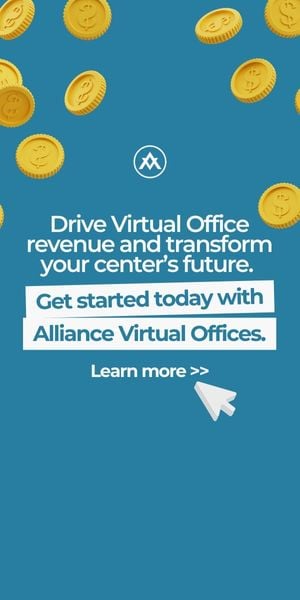- Many large companies are shifting to remote work and shedding their large offices in the process.
- Local governments need to shift their approach to economic development to embrace a distributed workforce.
- In our new ‘normal’ of remote work and decentralized teams, coworking spaces can serve as micro-HQs.
As more companies opt to allow their employees to work remotely, the role of the large scale corporate headquarters may change.
In some cases, like for major outdoor retailer REI, companies are selling their offices as they shift to a remote work future. REI has listed its brand new and yet to be occupied Bellevue, Washington 8-acre campus for sale. In San Francisco, major tech company Pinterest has gone so far as to pay $89.5 million dollars to terminate its lease at a new high rise development not far from their current offices.
Our culture still relies heavily on outdated constructs of work. In the days of the industrial revolution, equipment was expensive and immovable, so workers had to go where the equipment was. Whole communities were built around a factory, or a mill, or a mine. Now, despite all of the technological advances of the last century, corporations still depend on the headquarters model of work, insisting their workforce be centralized in a giant building. To work for one of these companies requires moving close to this giant building. The larger the company, the more employees that need to live nearby, putting pressure on the surrounding community.
For local governments and commercial landlords, landing the HQ of a large corporation has long been seen as a boon for economic development. We are now seeing the downsides of this traditional approach, however: skyrocketing costs of living, increasing income inequalities, gridlocked traffic, pollution, overcrowding, and negative impacts to mental and physical health.
By focusing so heavily on single large entities, it also puts that community economically at great risk. If the factory shuts down or the tech giant moves out, the lifeblood of the community goes with it.
For too long, the workforce has been poorly distributed. However, the ability, and recent necessity, to work remotely is changing that. Local governments and economic development agencies need to take advantage of this opportunity and look to establish locally based micro-HQs that can serve more than a single employer.
A more distributed workforce spread across major cities to suburbs and beyond to rural towns can create more economically diverse communities. More in line with the villages of centuries past, each community can have a complete ecosystem of its own — schools, artisans, service workers, professionals — but all be connected into the global digital economy as well by leveraging the ability of community members to work remotely.
In this new village model, flexible workspaces can serve as the micro-HQs for the local distributed workforce, filling commercial real estate and providing a physical anchor point for remote professionals. In coworking spaces, entire groups of entrepreneurs and remote workers work independently for a large variety of employers. If an industry giant downsizes or shutters completely, it is unlikely to affect all the workers in a single coworking space, creating economic resilience in that community.
The key driver to ensure the future of the distributed workforce is companies adopting it permanently. Acceptance of remote work has come a long way in the past few years, and even more so in the past few months, but it still has a long way to go. One thing that helps many employers accept a remote work policy is the assurance of a consistent and safe professional work environment.
The next issue facing a truly distributed workforce is job security. It is not enough for someone to be able to take their existing job with them when they decide to move away from the corporate HQ. That person also needs the ability to find another remote job once they do. The current tenure for a worker between the ages of 25-34 years old is only around 3 years in a given job. This is prime time for young workers to settle down and start a family, which makes taking a risk by leaving a major job market and going remote unfeasible for many. If finding a new job without having to relocate each time becomes easier, it also becomes easier to settle down and put down roots.
In order to support the micro-HQ model, economic development at the local level must shift to a proactive strategy that supports flexible workspaces and remote workers. By focusing on attracting and retaining a diverse remote workforce rather than single large companies, communities can build economic resilience no matter their size.


 Dr. Gleb Tsipursky – The Office Whisperer
Dr. Gleb Tsipursky – The Office Whisperer Nirit Cohen – WorkFutures
Nirit Cohen – WorkFutures Angela Howard – Culture Expert
Angela Howard – Culture Expert Drew Jones – Design & Innovation
Drew Jones – Design & Innovation Jonathan Price – CRE & Flex Expert
Jonathan Price – CRE & Flex Expert










